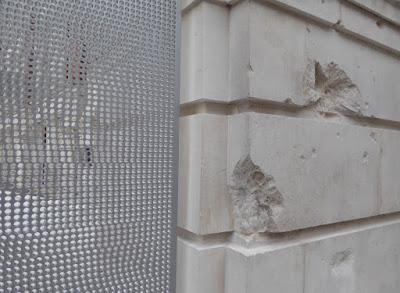 |
| Queen Caroline of Ansbach, Joseph Highmore c.1735, Royal Collection Trust © Her Majesty Queen Elizabeth II |
When history is written, it’s usually the men who take
centre stage, their spouses relegated to the shadows. So a new exhibition at
Kensington Palace that puts the spotlight on three intelligent, dynamic and
cultured women is to be welcomed. Caroline, Augusta and Charlotte were
German-born Protestant princesses who married into the Hanoverian dynasty and
moved to Britain.
 |
| Queen Charlotte, Johann Joseph Zoffany 1771, Royal Collection Trust © Her Majesty Queen Elizabeth II | | | |
Caroline and Charlotte became queens consort to George II and
George III respectively, while Augusta was Princess of Wales, regent and mother
to George III.
 |
| Augusta, Princess of Wales 1754, Jean-Etienne Liotard, Royal Collection Trust © Her Majesty Queen Elizabeth II |
With more than 30 children between them, they fulfilled their dynastic roles, even if there was much inter-generational feuding.
 |
| Children of George III and Queen Charlotte, Royal Collection Trust © Her Majesty Queen Elizabeth |
But despite the years of childbearing, they found time to actively support the latest scientific and
medical advances. They championed inoculation and publicly backed
the creation of London’s Foundling Hospital for deprived and abandoned
children.
 |
| Samples of English silk, January 1795, used to make clothes for Queen
Charlotte & family for wedding of future George IV (c) Historic
Royal Palaces |
They also acted as patrons of
British trades and manufacturing. Their outfits showcased locally designed and made fabrics, some of which are on show.
 |
| The Music Party Frederick, Prince of Wales with his Three Eldest Sisters, Philippe Mercier 1733, Royal Collection Trust © Her Majesty Queen Elizabeth |
It was an age known as The
Enlightenment, a time of intellectual awakening, when many of the old ideas
were being challenged. The exhibition examines how the princesses befriended and encouraged some
of the greatest cultural and intellectual figures of their age, welcoming
writers such as Alexander Pope and Jonathan Swift, astronomer Isaac Newton (who
performed light refraction experiments at Kensington Palace) and composers including
Handel, Mozart and Haydn.
 |
| Views of the Garden and Buildings at Kew, Sir William Chambers, 1763, © The Royal Board of Trustees of Royal Botanic Gardens Kew |
They were keen gardeners too - Augusta
was involved in the creation of the Royal Botanic Gardens at Kew and in 1763 she
commissioned the much-loved 10-storey pagoda, currently being restored to its
original splendour with the missing 80 dragons recreated.
 |
| 'Anti-Saccharrites, - or - John Bull and his Family leaving off the use of Sugar', 1792 (c) Historic Royal Palaces |
Living at a time when
newspapers and journals had become freely available, everything they did
attracted public attention. The royal family was often subjected to savage
satire and criticism. Some of these cartoons are on display.
 |
| Yinka Shonibare, Mrs Pinckney and the Emancipated Birds of South Carolina, 2017, Yale Center for British Art |
As part of their outward-looking remit, they also made use of the many products from across the empire –
exotic plants, rare birds and wild animals - and encouraged their study. Also in the exhibition is a new work created for the occasion by artist Yinka Shonibare. The sculpture interprets the 1753 encounter between Mrs Eliza Pinckney, the owner of a slave plantation in South Carolina, and Princess Augusta. Beside it is Mrs Pinckney's original letter to a friend, recounting their meeting.
More
than 200 objects are featured in the exhibition, including some loaned by the
Queen. They provide a fascinating insight into the lives of these three remarkable women, and celebrate the public roles they played in shaping ideas of a national identity.
Enlightened Princesses runs until November 12, 2017
https://www.hrp.org.uk






























